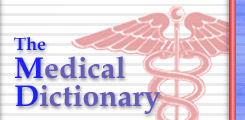Osteoporosis causes 1.5 million fractures each year in the United States, and this number is expected to rise as the population ages. Guidelines exist to identify high-risk older women by using bone mineral density (BMD) screening, but identifying osteoporosis risk in younger patients is more complicated. Green and associates conducted a meta-analysis to determine how accurate and precise physical examination findings are in predicting osteoporosis, osteopenia, and spinal fracture risk.
The authors searched MEDLINE to identify studies that compared physical examination findings with bone densitometry or incidences of vertebral fractures. Examination findings included weight, height loss, armspan height, self-reported thoracic kyphosis, wall-occiput distance (i.e., the distance from the back of the head to the wall), rib-pelvis distance, hand skinfold thickness, grip strength, and tooth count.
Fourteen studies were included in the authors' final analysis. Overall, height loss was a useful examination tool, but its efficacy in identifying osteoporosis risk was inconclusive. Armspan declined at about one half the rate of height as patients aged, and the armspan-height difference was a poor predictor of osteoporotic fractures. Low weight was consistently associated with fracture risk. A weight less than 59 kg (130 lb) was a sensitive, but not specific, risk measure, and lower weight predicted an even higher risk. Self-reported humped back was highly specific in predicting hip osteoporosis. Wall-occiput distance greater than 7 cm pointed toward thoracic fracture, according to one study. Low rib-pelvis distance had a positive likelihood ratio for vertebral fracture. Grip strength showed inconsistent associations with fracture risk. Hand skinfold thickness was not predictive of osteoporosis. Finally, tooth count appeared to correlate with BMD, and less than 20 teeth justifies further screening for osteoporosis.
The authors conclude that, although no single examination finding was sufficient to make a diagnosis of osteoporosis, low body weight, wall-occiput distance, low tooth count, self-reported kyphosis, and low rib-pelvis distance effectively predicted higher fracture and osteoporosis risk. The authors suggest that these findings are effective screening tools in patients who do not meet current BMD screening guidelines.
CAROLINE WELLBERY, M.D.
Green AD, et al. Does this woman have osteoporosis? JAMA December 15, 2004;292:2890-900.
COPYRIGHT 2005 American Academy of Family Physicians
COPYRIGHT 2005 Gale Group


